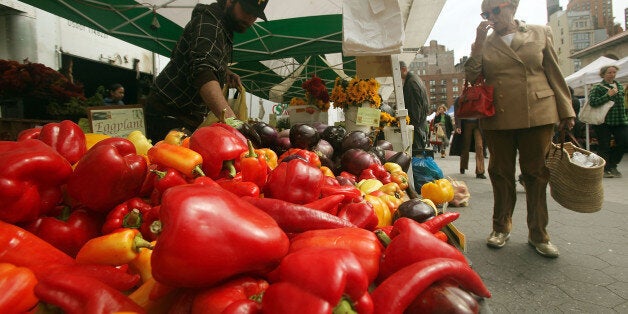
As a member of the House Committee on Agriculture and Ranking Member of the Subcommittee on Department Operations, Oversight and Nutrition, I have been consistently engaged in efforts to promote healthier eating habits and better nutrition for Americans. Since this is National Farmers Market Week, it is a good time to highlight the growth in urban agriculture that is occurring in communities across the country. This week, the U.S. Department of Agriculture reported a 76 percent increase in the number of farmers markets in the United States, up from 4,685 in 2008 to 8,286 in 2014. Ohio is a leader, ranking fourth in the number of farmers markets with 311, behind California (764), New York (638) and Michigan (339).
The growth in the number of farmers markets reflects the growth in the number of small farming systems that are sprouting in many urban settings. With 17,000 vacant lots covering 33,000 acres of land in Cleveland alone, there are plenty of opportunities in the district I represent to create urban farms. In abandoned lots and on roof tops, for example, nonprofit groups, schools, colleges, churches, and local and state government agencies are partnering to secure land, develop skills, and acquire funding to create food gardens and small farms. These groups and entities are transforming vacant lots and unused property into flourishing farms that provide fresh fruits and vegetables to residents in some of the most economically challenged areas of the 11th District.
Beginning in 2007, a number of zoning changes paved the way for more extensive farming within the city. Around the same time, the Cleveland-Cuyahoga County Food Policy Coalition was created through joint efforts of the Cleveland-Cuyahoga Ohio State University Extension and Case Western Reserve University to stimulate interest in local agricultural projects. I was able to secure funding from the Department of Agriculture's Natural Resource Conservation Service for 40 hoop houses, enclosed structures which help extend the farming season. Because of their success, more hoop houses are planned.
Food-insecure households are concentrated in urban areas and are more likely to be in communities known as food deserts. These are communities without a reasonably close supermarket, leaving many to depend on convenience stores and fast food outlets where fresh fruits and vegetables are not readily available. According to a report prepared for Congress by the Economic Research Service of the U. S. Department of Agriculture (USDA), about 2.3 million people who do not own a car live more than one mile away from a supermarket.
The fresh fruits and vegetables harvested in our neighborhoods are helping to alleviate some of the food challenges we face. Food insecurity, food deserts, lack of proper nutrition, and obesity place many Americans in danger of poor health and premature death. About 15 percent of American households experienced food insecurity during some part of 2012. As a result, millions of Americans did not have access to enough food for an active, healthy life. Households with children were more likely to be food insecure as 35 percent of households headed by single mothers lack an adequate supply of food.
Lack of a proper diet and nutrition can lead to obesity and other health problems. Nearly two-thirds of adults and one-third of children in this country are overweight or obese. Left unchecked, being overweight or obese increases the risks for type 2 diabetes, high blood pressure and heart disease. People who live in food deserts are twice as likely to die from type 2 diabetes as people who do not. Having more fresh fruits and vegetables available in local farmers markets will help to reduce nutritional problems.
Urban farming has many benefits. By growing food locally and giving underserved urban neighborhoods access to fresh produce, jobs are created, local economies are strengthened by circulating dollars within the community, the harmful effects of food deserts are reduced, and consumers become engaged in learning how food is grown. Celebrate National Farmers Market Week by patronizing a local farmers market in your neighborhood. It is a heathy and wise thing to do.